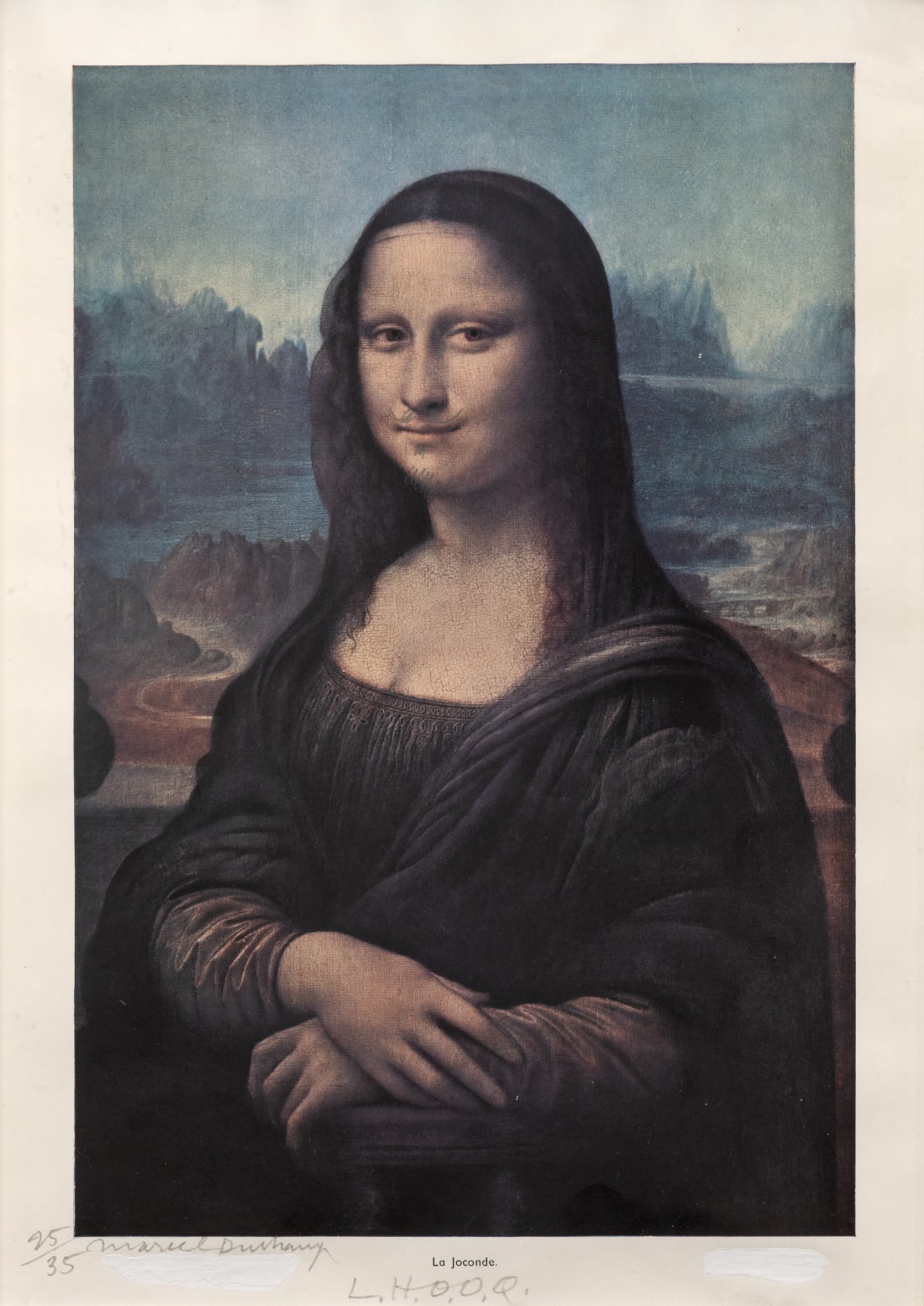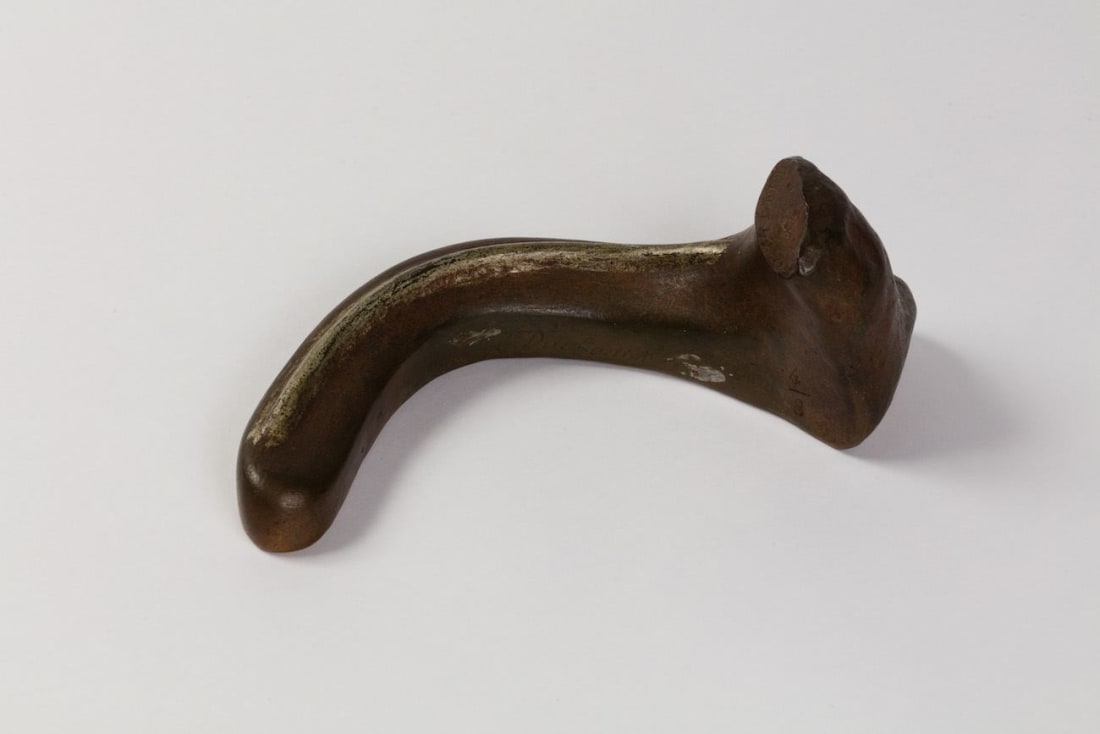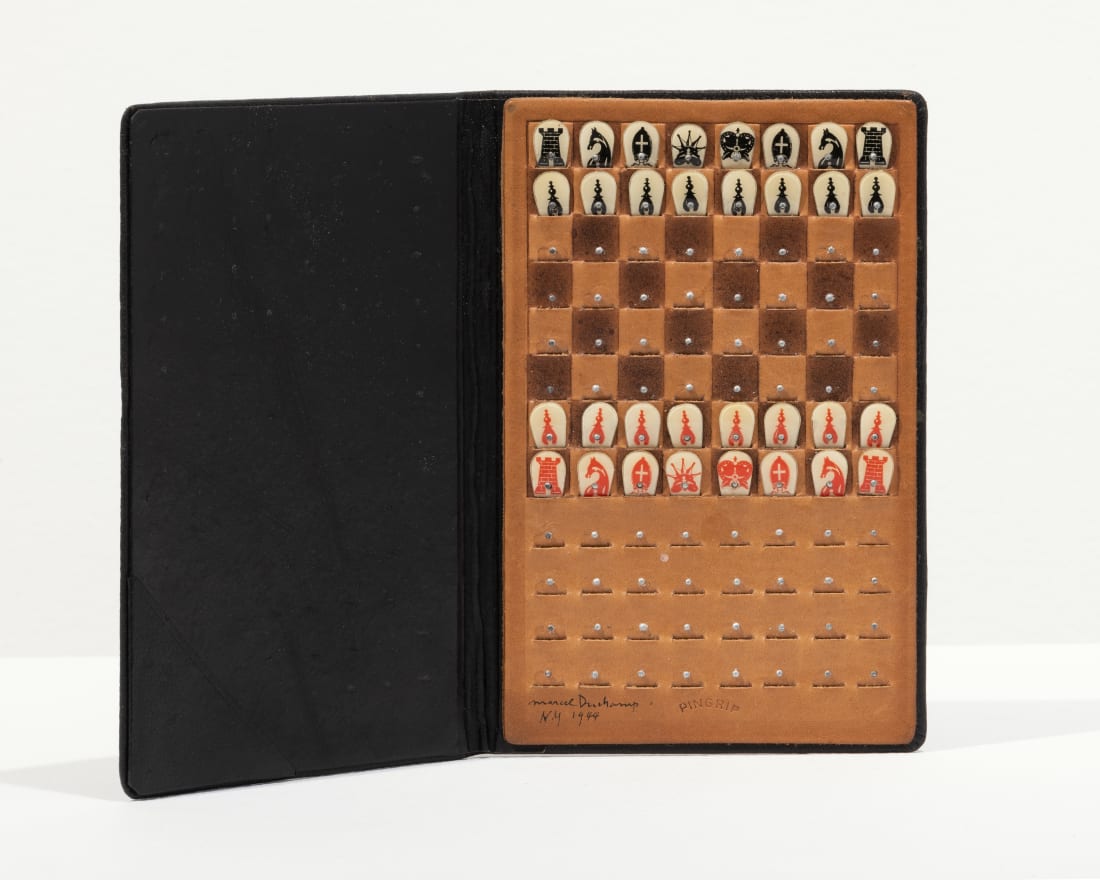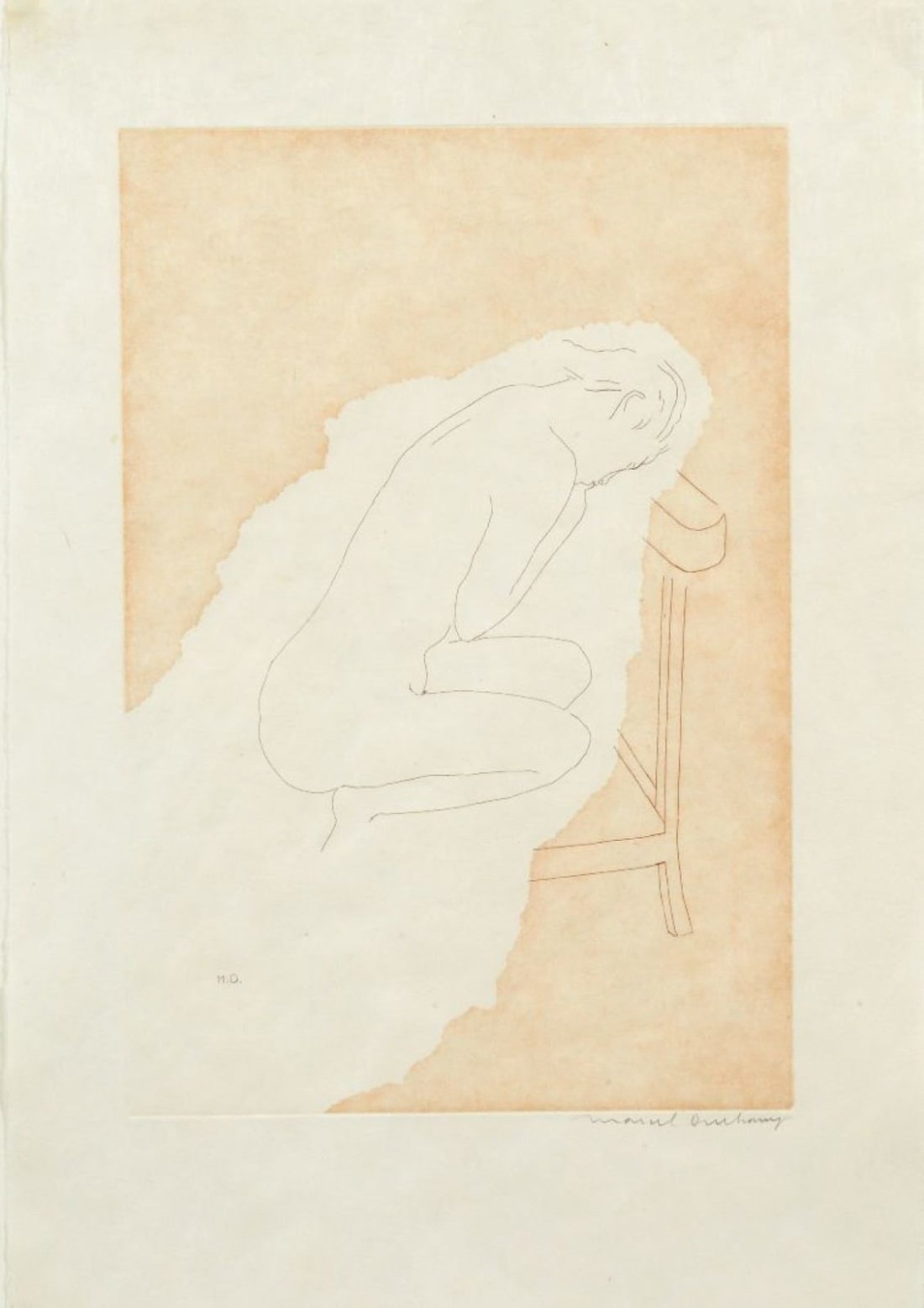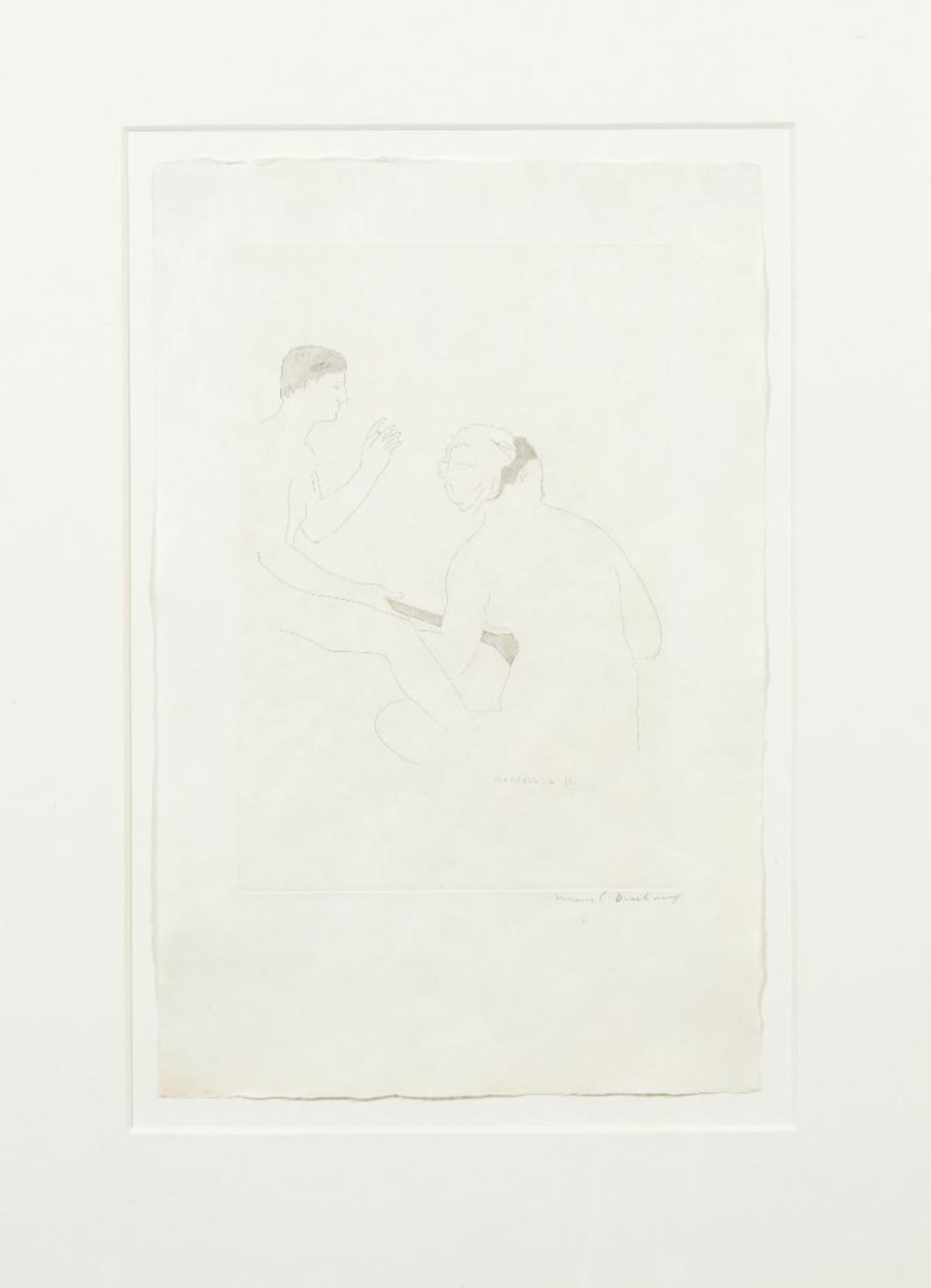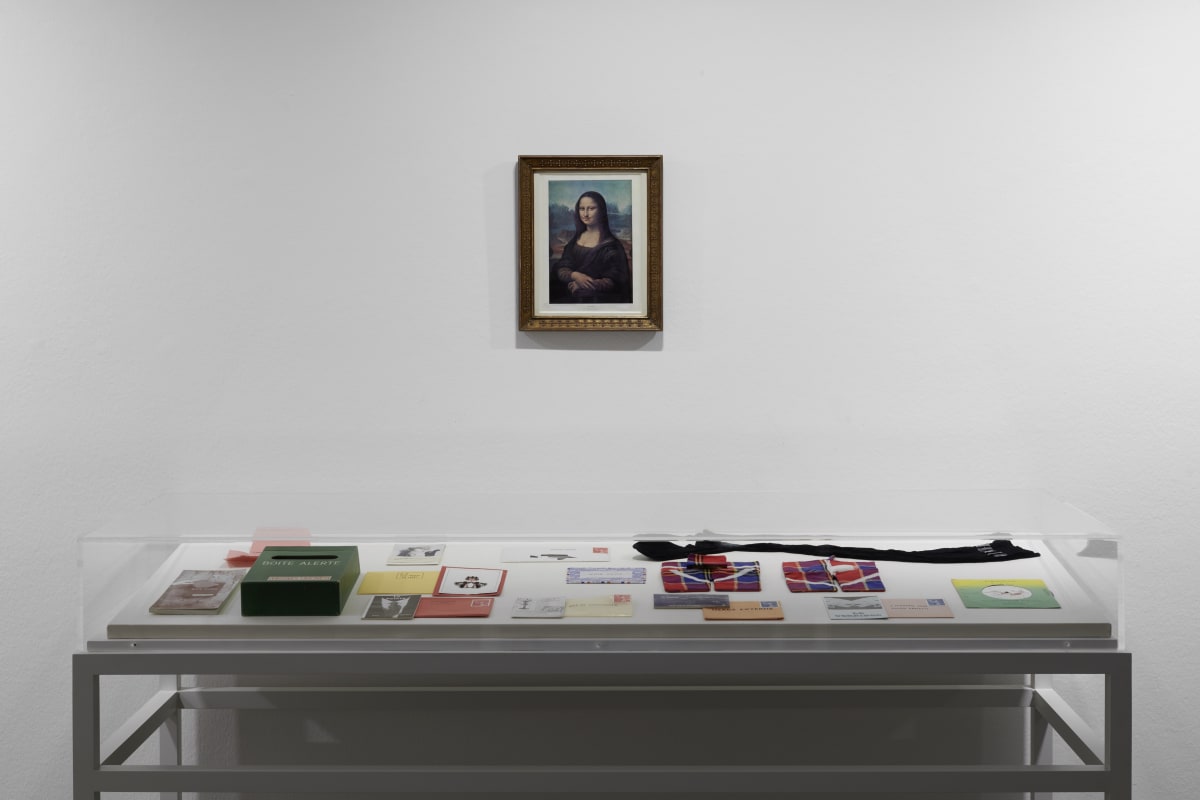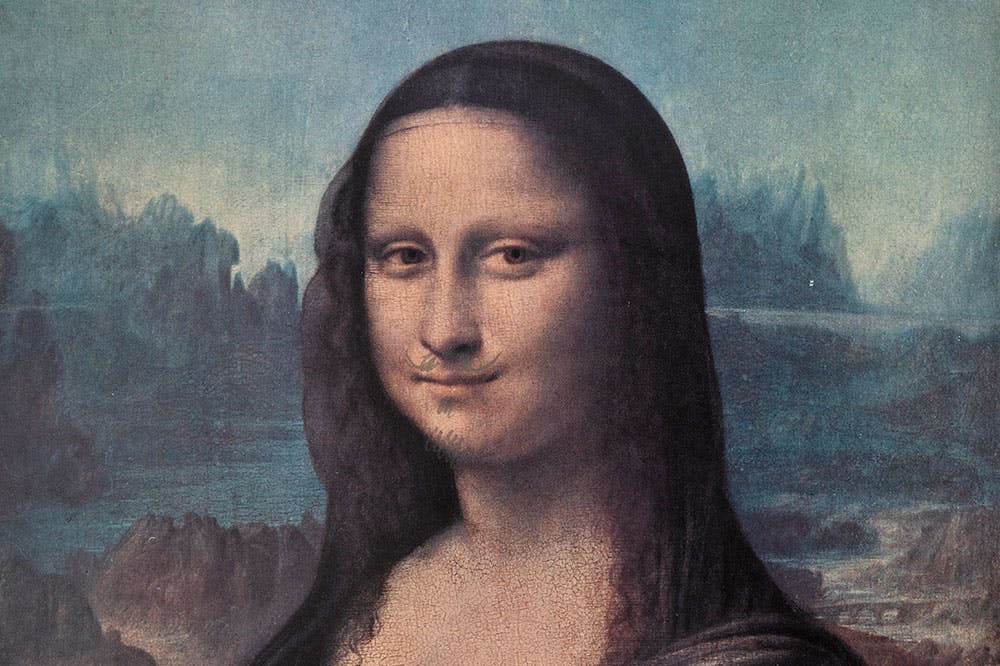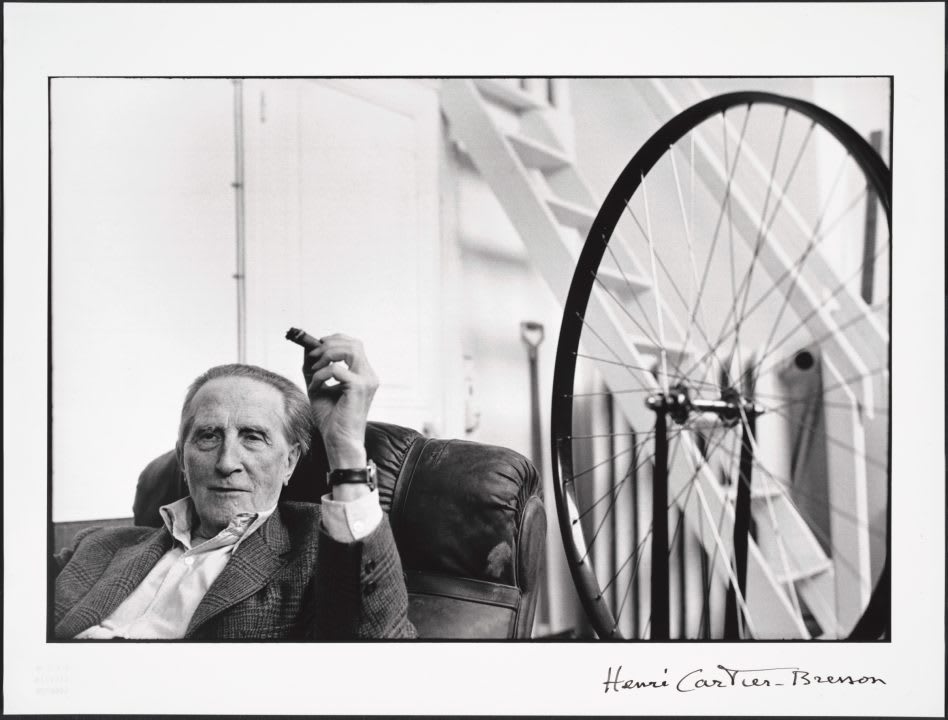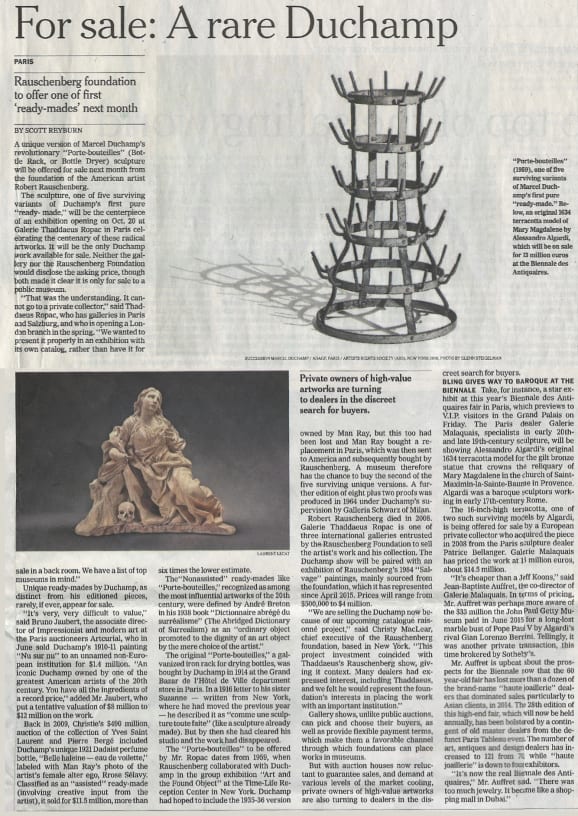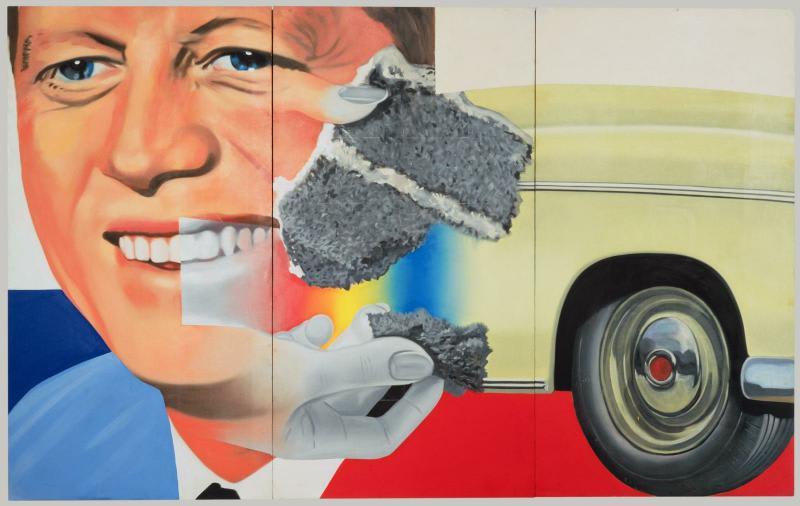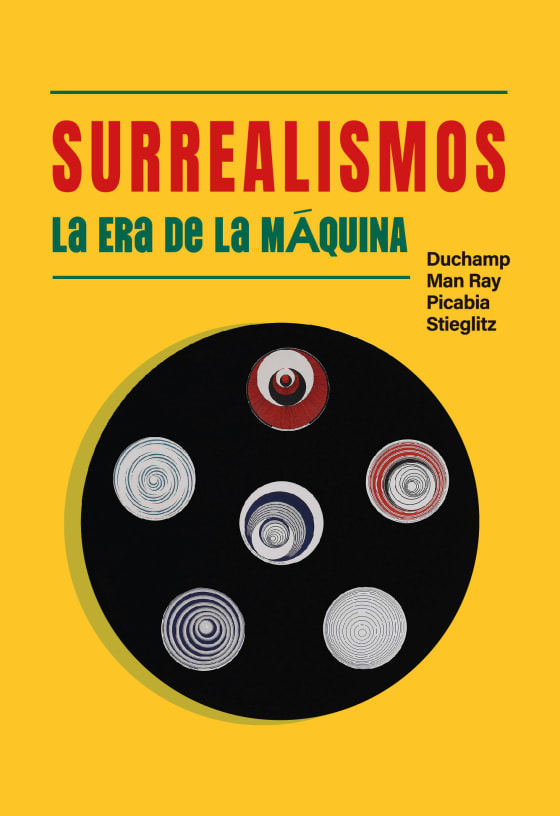
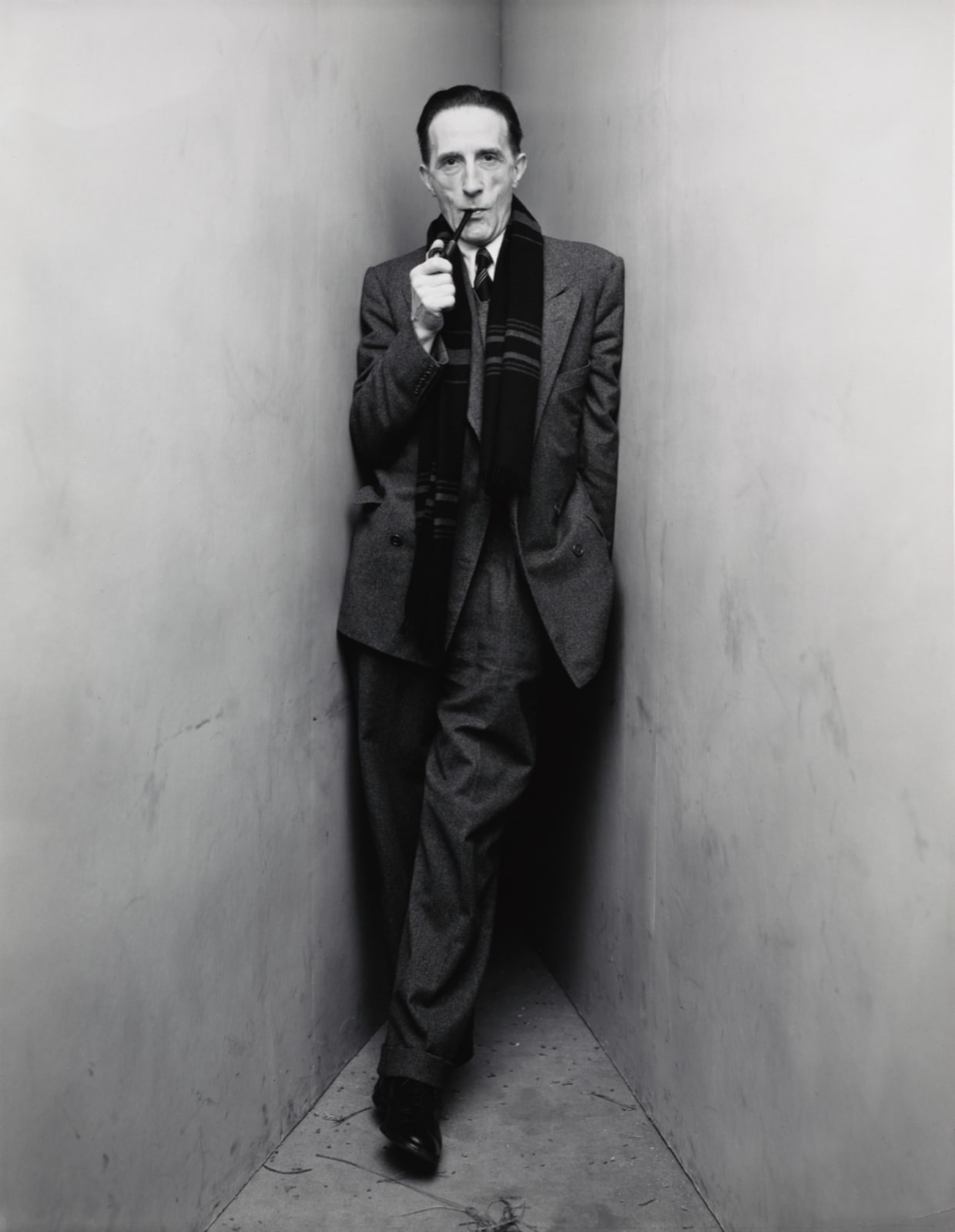
Marcel Duchamp
Overview
'An ordinary object [can be] elevated to the dignity of a work of art by the mere choice of an artist.'
Marcel Duchamp's reflections on the status of the work of art and the artist's position in the face of industrial automation exerted considerable influence on the development of 20th-century art. His initial foray into modern art followed the path of his contemporaries, with early paintings in the mode of Cézanne and the Impressionists and, after 1910, a shift towards Cubism. His irreverence for conventional aesthetic standards led him to devise his famous readymades and heralded an artistic revolution. With his first readymade Bicycle Wheel (1913; now lost), he initiated a creative process that was entirely separate from conventional notions of artistic skill. Instead, he emphasised the conceptual value of a work of art, seducing the viewer through irony and verbal witticisms rather than relying on aesthetic appeal.
Although he famously embraced a career as an international chess player in the 1920s, Duchamp never truly abandoned the art world. He continued working on larger-than-life artistic projects such as Box in a Valise (1935–41) and Étant Donnés (1946–66), as well as curating exhibitions that made a sensation. Aptly described by the Abstract Expressionist painter Willem de Kooning as a one-man movement, he is associated with many avant-garde movements, from Cubism to Dada and Surrealism, and paved the way for later developments such as Pop, Minimalism and Conceptual art. Public esteem for him grew as artists of the 1950s and 1960s found inspiration in his unorthodox attitudes toward art-making. His greatest legacy lies in his questioning, admonishment, critique, and playful ridicule of existing norms in order to transcend the status quo.
Marcel Duchamp's reflections on the status of the work of art and the artist's position in the face of industrial automation exerted considerable influence on the development of 20th-century art. His initial foray into modern art followed the path of his contemporaries, with early paintings in the mode of Cézanne and the Impressionists and, after 1910, a shift towards Cubism. His irreverence for conventional aesthetic standards led him to devise his famous readymades and heralded an artistic revolution. With his first readymade Bicycle Wheel (1913; now lost), he initiated a creative process that was entirely separate from conventional notions of artistic skill. Instead, he emphasised the conceptual value of a work of art, seducing the viewer through irony and verbal witticisms rather than relying on aesthetic appeal.
Although he famously embraced a career as an international chess player in the 1920s, Duchamp never truly abandoned the art world. He continued working on larger-than-life artistic projects such as Box in a Valise (1935-41) and Étant Donnés (1946-66), as well as curating exhibitions that made a sensation. Aptly described by the Abstract Expressionist painter Willem de Kooning as a one-man movement, he is associated with many avant-garde movements, from Cubism to Dada and Surrealism, and paved the way for later developments such as Pop, Minimalism and Conceptual art. Public esteem for him grew as artists of the 1950s and 1960s found inspiration in his unorthodox attitudes toward art-making. His greatest legacy lies in his questioning, admonishment, critique, and playful ridicule of existing norms in order to transcend the status quo.
Duchamp was born in Normandy in 1887 to a family of artists, counting painter Jacques Villon, Cubist sculptor Raymond Duchamp-Villon and Dada artist Suzanne Duchamp-Crotti among his siblings. He received academic training at the Académie Julian in 1904–05 and his first works reveal the influence of Henri Matisse. In the early 1910s, he created his personal brand of Cubism, which culminated in Nude Descending a Staircase, No. 2 (1912), a painting that caused a sensation at the 1913 New York Armory Show.
For most of his life, Duchamp divided his time between France and the USA, living mainly in New York from 1915–23 and then in Paris from 1923–42, before returning to New York. He became a naturalised American citizen in 1955. His first one-man exhibition was held at the Arts Club of Chicago in 1937, followed by his first American retrospective at the Pasadena Art Museum in 1963, and his first European survey at the Tate Gallery, London in 1966. Since his death in 1968, Duchamp's work has been the subject of countless exhibitions and can be found in the permanent collections of the most important museums worldwide. The Philadelphia Museum of Art has the most extensive holdings of his work, due to a generous donation by the Arensbergs, who were his lifelong friends and patrons.
Videos

Artworks
Exhibitions
Publications




